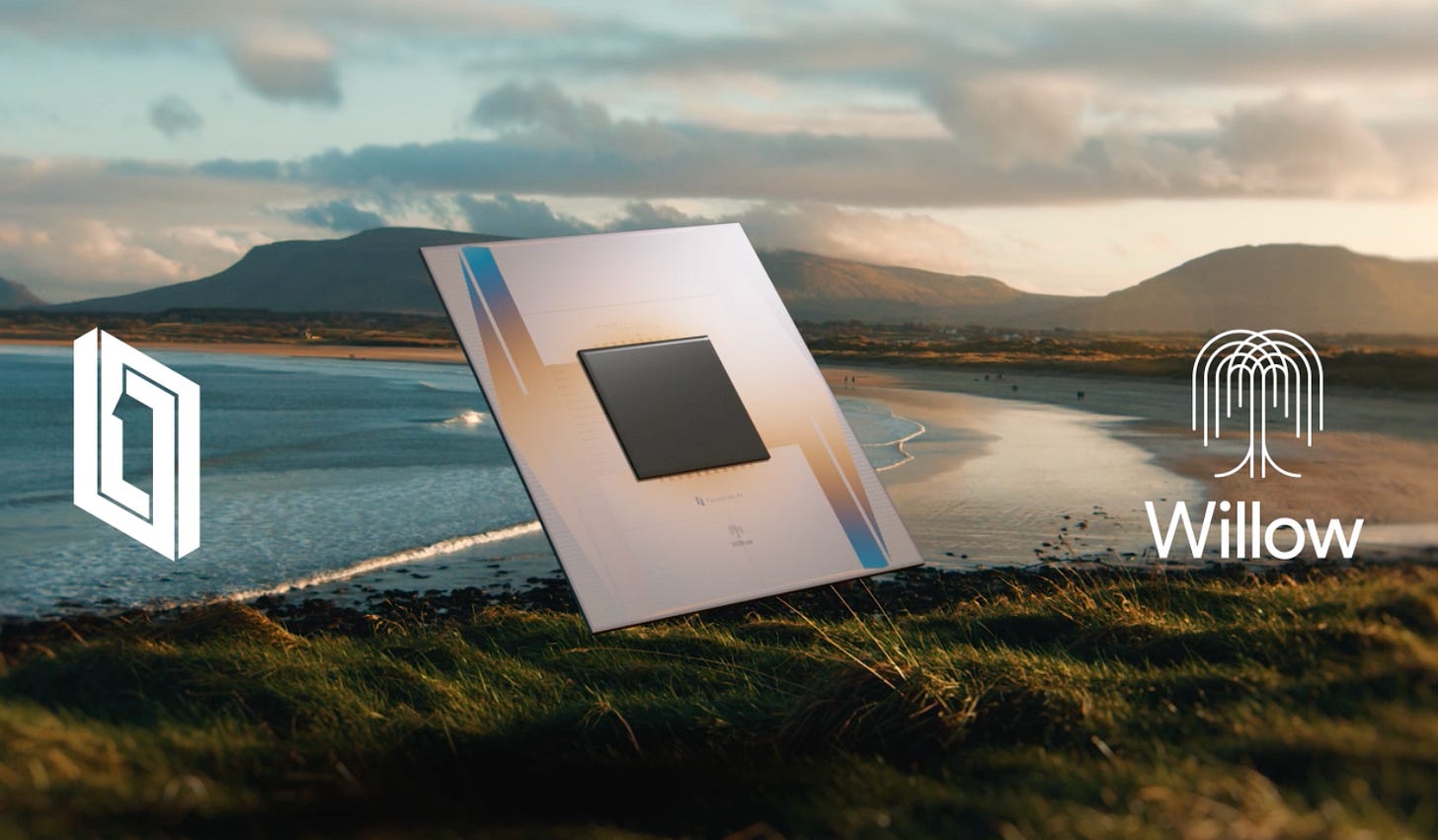In a Google lab last December, a quantum chip called Willow did something extraordinary. In under five minutes, it solved a problem that would have taken one of today’s fastest supercomputers 10 septillion years to crack. That number is far longer than the age of the universe.
Perhaps more astonishing than the speed is the debate it sparked — not just about computers, but about reality itself.
One of Google's scientists, Hartmut Neven, suggested Willow's success may support the idea that quantum computation occurs in parallel universes. If that's true, then Willow didn't just solve a problem. It momentarily cracked the shell of our universe... and maybe leaked a little light into ours from the others.
But before we leap to conclusions, let's understand what happened.
A Machine That Thinks in Possibilities
Quantum computers don't "think" like we do. They don't pick a path and follow it. They hold many possibilities at once, balancing them in a strange dance of probability and interference.
This dance is called superposition, and it lets a quantum computer explore multiple outcomes simultaneously. Some physicists — such as David Deutsch, often considered one of the fathers of quantum computing — say this is more than just math. They say each possibility is real; each one unfolds in its own parallel universe. A quantum computer, in this view, borrows processing power from all those alternate realities. (For more on this, see Google’s blog post.)
Let me repeat that, so you don’t miss it. If this view is correct, the Willow chip borrowed processing power from another universe.
That's the multiverse interpretation. It's not science fiction. It's a serious theory in quantum physics. But it's also controversial and far from universally accepted.
What Willow Did — and Didn't — Do
The task Willow solved is called Random Circuit Sampling. It's a stress test, not a world-saving problem. Google itself acknowledges that while RCS is extremely challenging for classical computers, quantum computers have yet to demonstrate practical commercial applications. But it's a hard problem — hard enough that classical machines take longer than the universe has existed to solve it. So when Willow breezed through, physicists paid attention.
Neven said this feat supports the idea that quantum computation draws on the multiverse. Critics quickly pushed back. They pointed out that there are other explanations — ways of understanding quantum mechanics that don't involve spawning new realities for every possibility.
One critic, physicist Ethan Siegel, argued strongly against this interpretation, stating that "Quantum computation does not occur in many parallel universes; it does not occur in any parallel universes; it does not demonstrate or even hint at the idea that we live in a multiverse."
Siegel and others suggest that Neven may have confused mathematical tools (like Hilbert space) for physical realities (like actual parallel worlds).
And so the debate continues. What really happened inside Willow?
What It Means to Bend Reality
Here's where it gets interesting for those of us who don't run quantum labs, but who are deeply interested in what it means to be alive in a world that may be far stranger than it appears.
Whether Willow "proves" the multiverse or not may be beside the point.
What matters is this:
Reality is more spacious than we thought.
Possibility may be a fundamental building block of the universe.
Our tools—our minds, our machines—are beginning to scrape against the walls of something much larger than consensus reality.
Even if the multiverse isn't true—if this universe is the only on —Willow still bends reality. It bends what we thought was possible. It reminds us that our models are provisional, that the limits we perceive may not be limits at all.
The Real Miracle Isn't the Chip
It's not that Willow might have touched other universes; it's that we're ready to have this conversation.
We've reached a moment when debates in particle physics are echoing the oldest mystical questions: How many realities exist? Can they touch? Are we limited to just one experience of time, or many? Is choice what creates a new world?
The real miracle isn't chips like Willow. It's that the universe gave rise to beings who build such things… who ask such questions… who look into a cold little machine and wonder if they've seen their own reflection in another reality.
If you're reading this, you're likely one of those beings.
And whether you call yourself a scientist, mystic, layman or entrepreneur… Willow's feat is an invitation.
To stretch. To question. To hold multiple truths simultaneously. To imagine. To bend reality.
You don't need to be a quantum physicist to open you mind. Merely keep asking, “What's really possible?”

